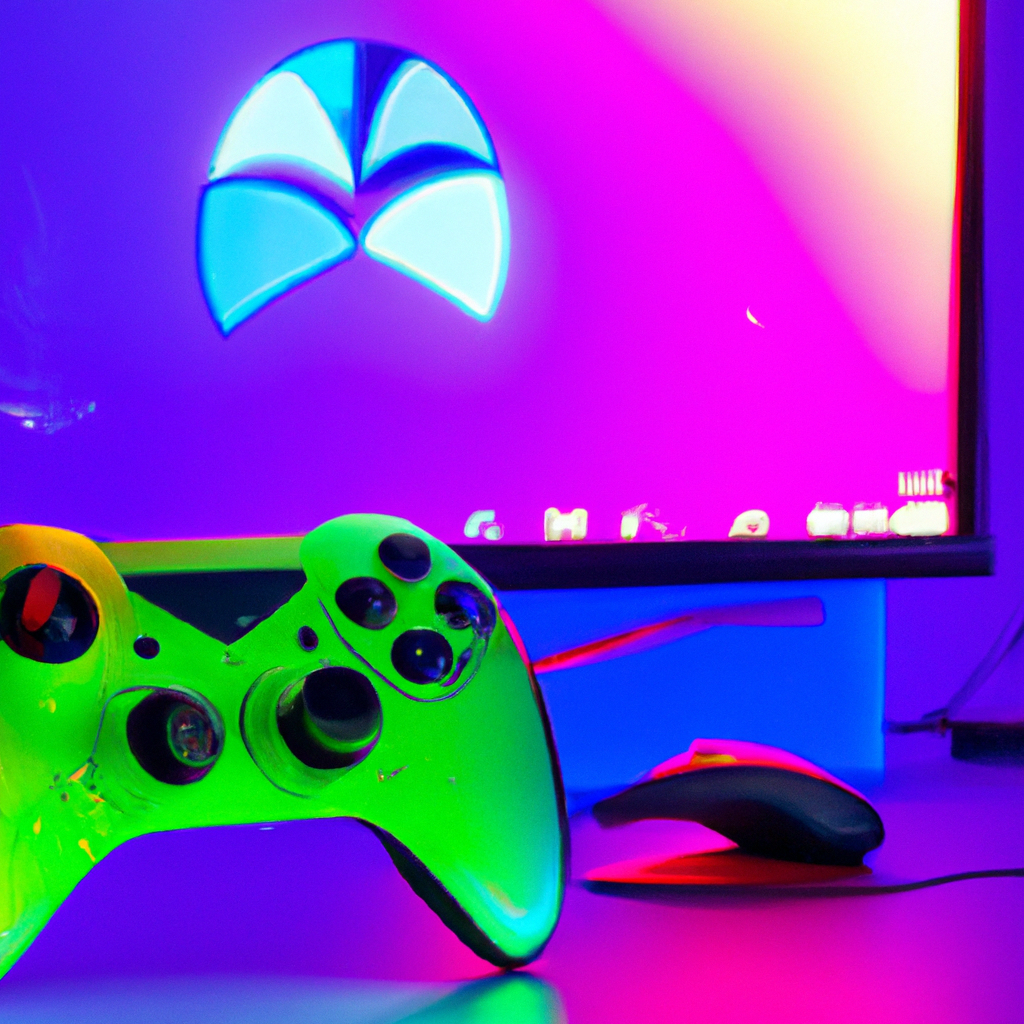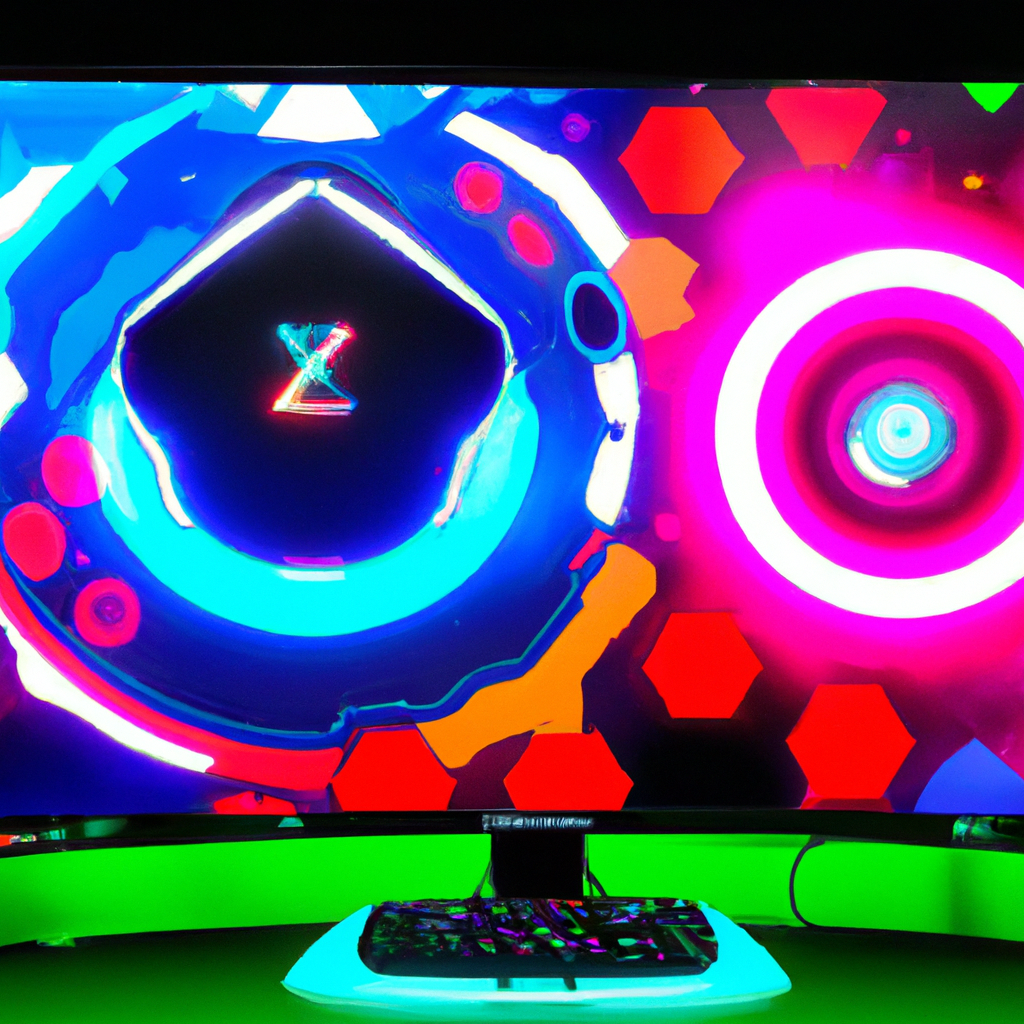What Are The Best Color Settings For A Gaming Monitor?
When it comes to optimizing your gaming experience, the color settings on your monitor play a crucial role. But with so many options to choose from, finding the perfect color balance can be a daunting task. Don’t worry, because in this article, you will discover the best color settings for a gaming monitor that will make your games come alive. From vibrant hues that enhance your gaming visuals to reducing eye strain, we’ve got you covered. So prepare to elevate your gaming experience to a whole new level as we delve into the world of color settings for your monitor.
Brightness and Contrast
1.1 Adjusting the Brightness
When it comes to optimizing your gaming experience, adjusting the brightness of your gaming monitor is crucial. The brightness level directly affects how vivid and clear the images on your screen appear. However, it is essential to strike a balance between brightness and eye comfort. Setting the brightness too high may cause eye strain, while setting it too low can make it difficult to see details in darker games.
To adjust the brightness, first, locate the brightness settings in your monitor’s menu. Most monitors have dedicated buttons or an OSD (On-Screen Display) that allows you to make adjustments easily. Experiment with different brightness levels while playing your favorite games and find the sweet spot where the details are clear, and the brightness is not overwhelming.
1.2 Optimizing Contrast Ratio
Alongside brightness, optimizing the contrast ratio of your gaming monitor is vital for a visually engaging gaming experience. The contrast ratio determines the difference between the brightest whites and the darkest blacks that can be displayed on your screen. A higher contrast ratio enhances the image quality and brings out more detail in both well-lit and darker scenes.
To optimize the contrast ratio, navigate to the contrast settings in your monitor’s menu. Similar to adjusting brightness, most monitors provide easily accessible buttons or an OSD for modifying contrast settings. Begin by increasing the contrast gradually and testing it out in different games. Look for a balance where the whites appear bright and the blacks remain deep and rich, allowing for optimal visibility and immersion.
Color Temperature
2.1 Choosing the Right Color Temperature
Color temperature refers to the warmth or coolness of the colors displayed on your gaming monitor. It is measured in Kelvin (K), and different color temperatures can significantly impact your gaming experience. The two primary color temperature settings are warm (lower Kelvin value) and cool (higher Kelvin value).
To choose the right color temperature, consider the type of games you play and your personal preference. Warm color temperatures (around 6500K) tend to create a more natural and soothing ambiance, while cool color temperatures (around 9000K) can make colors appear more vibrant and intense. Experiment with different color temperature settings and find the one that enhances your gaming visuals and suits your preferences.
2.2 The Impact of Color Temperature on Gaming
The impact of color temperature on gaming goes beyond mere aesthetics. Different color temperatures can indirectly affect your gaming performance and overall experience. Warm color temperatures can create a more relaxed atmosphere, making long gaming sessions more comfortable and reducing eye strain. On the other hand, cooler color temperatures can heighten your focus and attention, making fast-paced games more engaging.
Consider the genre and style of the games you play when deciding on the color temperature. For atmospheric, story-driven games, a warmer color temperature might create a more immersive experience. For competitive and action-packed games, a cooler color temperature can help improve your reaction times and keep you engaged in the heat of the action.

RGB Levels
3.1 Adjusting Red, Green, and Blue Levels
RGB levels refer to the individual intensities of the red, green, and blue primary colors on your gaming monitor. Adjusting these levels allows for a more precise control of color reproduction and can significantly impact the overall image quality and color accuracy.
Most gaming monitors offer dedicated settings to adjust the RGB levels. These settings might be found in the monitor’s menu or through specialized software provided by the manufacturer. By modifying the intensity of each color channel, you can fine-tune the color output according to your preferences and the specific requirements of the games you play.
3.2 Finding the ideal RGB Balance for Gaming
Finding the ideal RGB balance for gaming is a subjective process that depends on personal preferences and the specific characteristics of your monitor. However, there are some general guidelines to help you navigate this adjustment.
Start by setting the RGB levels to default values and assess the image quality. Then, experiment with small adjustments to each color channel, evaluating how they affect the overall color reproduction. Ideally, aim for a balance where the colors appear vivid and accurate without being oversaturated or washed out. Remember that different games may have unique color palettes, so periodically check your RGB settings when switching between games.
Gamma
4.1 Understanding Gamma
Gamma is a measurement of the luminance relationship between input and output of a display system. In simpler terms, it determines how the brightness of an image appears on your gaming monitor. The gamma setting allows you to adjust the monitor’s response curve, altering the brightness levels of various shades from deep blacks to bright whites.
Most gaming monitors offer different gamma presets or manual adjustment options. Understanding gamma and how it affects your gaming experience can help you optimize your display settings for maximum visual clarity and enjoyment.
4.2 Setting the Ideal Gamma for Gaming
Setting the ideal gamma for gaming involves finding the right balance between shadow detail and overall brightness. A gamma setting that is too high can make dark scenes overly bright, resulting in loss of details. Conversely, a gamma setting that is too low can cause shadows to appear too prominent, making it difficult to see subtle details in brighter scenes.
Experimenting with different gamma settings is key to finding the ideal balance. Many monitors offer different gamma presets, such as 2.2 or 2.4, which are commonly used. Additionally, some gaming monitors provide manual gamma adjustment options, allowing you to fine-tune the gamma curve according to your preferences. Remember to test your chosen gamma setting in various games to ensure it enhances visibility and detail in all lighting conditions.

Color Space
5.1 SRGB vs. Adobe RGB
Color space refers to the range of colors that a display device, such as a gaming monitor, is capable of reproducing. Two common color space standards are sRGB and Adobe RGB. sRGB is the standard color space used for most consumer electronic devices, including gaming monitors. It offers a wide range of colors suitable for everyday use. Adobe RGB, on the other hand, has a larger color gamut and is primarily used in professional applications such as photo and video editing.
When it comes to gaming, sRGB is generally the recommended color space. Most games are designed and optimized for the sRGB color space, ensuring accurate color reproduction. While Adobe RGB may offer a wider color gamut, it is not fully utilized in gaming content. Therefore, sticking to the sRGB color space ensures that your gaming visuals are displayed as intended by the game developers.
5.2 The Importance of Color Space in Gaming
Color space plays a vital role in gaming, as it directly impacts the accuracy and vibrancy of the colors you see on your monitor. When a game is designed with a specific color space in mind, such as sRGB, playing it on a monitor capable of reproducing that color space ensures the most accurate and immersive visual experience.
By using the appropriate color space, you can ensure that in-game colors appear as intended by the game developers. This enhances the overall realism and immersion of the game. Additionally, using the correct color space facilitates consistent color reproduction across different monitors, making your gaming experience more reliable when playing games on various devices.
HDR (High Dynamic Range)
6.1 Enabling HDR
HDR, or High Dynamic Range, is a feature found in many modern gaming monitors that allows for a more extensive range of contrast and brightness levels. Enabling HDR enhances the visual depth and realism of games, providing a more immersive gaming experience.
To enable HDR, your gaming monitor must support this feature, and you need to ensure that your game and system settings are compatible. Most game consoles and gaming PCs offer specific settings to enable HDR. Consult your monitor’s user manual or the manufacturer’s website for instructions on enabling HDR for your specific model.
6.2 Maximizing HDR Performance
Maximizing HDR performance involves a combination of selecting the appropriate HDR settings on your monitor and ensuring that your chosen game titles support HDR. While HDR can significantly enhance your gaming visuals, it is essential to remember that not all games utilize HDR to the same extent.
To maximize HDR performance, start by adjusting the HDR settings on your monitor to fit your preferences. These settings may include HDR brightness, HDR color saturation, and HDR contrast. Experiment with different combinations until you find the optimal balance that brings out the best in your games.
Additionally, check for game-specific HDR settings within the game options menu. Some games provide additional HDR customization options that allow you to fine-tune the HDR performance according to your liking. By making use of both your monitor’s HDR settings and in-game HDR options, you can ensure that your gaming experience is optimized for the best possible HDR performance.

Motion Blur Reduction
7.1 Understanding Motion Blur
Motion blur refers to the phenomenon where fast-moving objects in games leave a trail or appear blurry. It can distort the clarity of images and reduce the overall gaming experience, particularly in fast-paced action games.
Understanding motion blur is crucial to address this issue and ensure a smoother and more responsive gaming experience. Motion blur reduction technology aims to minimize or eliminate the perceived motion blur, resulting in sharper and more defined images during high-speed movements.
7.2 Using Motion Blur Reduction Technology
Many gaming monitors offer motion blur reduction features, such as black frame insertion (BFI) or backlight strobing. These technologies work by inserting black frames between each actual frame, reducing the persistence of the image and, consequently, the perceived motion blur.
To make use of motion blur reduction technology, enable the appropriate settings on your gaming monitor. Keep in mind that enabling motion blur reduction may affect the overall brightness of the image, so you might need to adjust other display settings accordingly. Experiment with different motion blur reduction settings and find the balance that offers the best improvement in motion clarity without sacrificing overall image quality.
Color Calibration
8.1 Importance of Color Calibration
Color calibration refers to the process of adjusting and fine-tuning various color settings on your gaming monitor, such as gamma, RGB, color temperature, and color space, to achieve accurate color representation. Proper color calibration ensures that the colors you see on your screen match the intended colors of the game and other content.
The importance of color calibration lies in achieving true-to-life visuals and consistent color reproduction. Without proper calibration, the colors on your monitor may appear washed out, inaccurate, or oversaturated, which can hinder your gaming experience and affect visual clarity.
8.2 Calibrating Colors for Accurate Representation
To calibrate colors for accurate representation, you can use hardware calibration tools or software calibration settings provided by your monitor manufacturer. Hardware calibration tools, such as colorimeters, measure and adjust color settings based on objective data, resulting in precise and consistent color calibration.
Software calibration settings, on the other hand, allow you to manually adjust color settings based on visual perception. By using built-in calibration options in your monitor’s menu or third-party calibration software, you can modify gamma, RGB levels, color temperature, and other color settings to achieve accurate representation.
Regularly calibrating your gaming monitor is recommended to ensure color accuracy over time. As monitors age, their color reproduction capabilities may change, making periodic recalibration necessary to maintain optimal visual quality.

Game-Specific Settings
9.1 Adjusting Colors for Different Games
Different games have unique color palettes and art styles, which can significantly impact the visual experience. Adjusting color settings for different games allows you to optimize the visuals according to the specific requirements and artistic choices made by the game developers.
Explore the in-game settings menu of each game you play to find options related to color settings. These options may include contrast, brightness, and saturation sliders, as well as presets designed specifically for different genres or visual styles. Experiment with these settings while playing different games and find the combination that enhances the game’s atmosphere and brings out the intended visual style.
9.2 Enhancing Immersion with Game-Specific Settings
By utilizing game-specific settings, you can further enhance the immersion and visual impact of your gaming experience. Each game is meticulously designed to create a specific atmosphere and evoke particular emotions. Making use of game-specific color settings ensures that you fully immerse yourself in the intended visual world of the game.
Pay attention to the artistic direction and narrative of the game when adjusting color settings. For example, in a post-apocalyptic game, you may want to increase the contrast and saturation to emphasize the desolate environment. On the other hand, a fantasy RPG might benefit from warmer color temperatures and vibrant color palettes to evoke a sense of wonder.
Experiment with different game-specific settings, and allow yourself to get lost in the captivating visuals crafted by the game developers. By tailoring the color settings to each game’s unique art style, you can enhance your gaming experience and fully appreciate the visual aspects of your favorite games.
Eye Comfort
10.1 Reducing Eye Strain with Proper Color Settings
Long gaming sessions can take a toll on your eyes, leading to fatigue and discomfort. Proper color settings on your gaming monitor can help reduce eye strain and promote eye comfort, allowing you to enjoy gaming for longer periods without experiencing discomfort.
To reduce eye strain, consider adjusting the color temperature of your monitor. Warm color temperatures (around 6500K) create a more soothing and relaxed viewing experience, which can be beneficial during extended gaming sessions. Additionally, ensure that the brightness and contrast settings are not too high, as excessive brightness can cause eye fatigue.
Regular breaks during gaming sessions and practicing proper eye care habits, such as blinking regularly and maintaining an appropriate viewing distance, are also essential for reducing eye strain. Combining these practices with optimal color settings on your gaming monitor can help minimize eye fatigue and create a more comfortable gaming environment.
10.2 Blue Light Filters and Gaming Monitors
Blue light emitted by electronic devices, including gaming monitors, has been known to disrupt sleep patterns and cause eye strain. Blue light filters or blue light reduction technologies aim to reduce the amount of potentially harmful blue light emitted by your gaming monitor.
Many modern gaming monitors offer blue light filter settings or dedicated blue light reduction features. These settings reduce the intensity of blue light, resulting in a warmer color temperature and a more eye-friendly viewing experience. Enabling blue light filters during gaming sessions can help alleviate eye strain and promote better sleep patterns.
However, it’s important to note that blue light filters may slightly impact color accuracy. If color accuracy is crucial for your gaming experience, consider using blue light filters sparingly or only during nighttime gaming sessions. Finding the right balance between eye comfort and color accuracy is key to achieving an optimal gaming visual experience.
In conclusion, finding the best color settings for your gaming monitor is a personal journey that varies based on individual preferences and the specific characteristics of your monitor. Through adjusting brightness and contrast, choosing the right color temperature, optimizing RGB levels, understanding gamma, considering color space, maximizing HDR capabilities, utilizing motion blur reduction, implementing color calibration, exploring game-specific settings, prioritizing eye comfort, and addressing blue light concerns, you can tailor your gaming visuals to enhance immersion, clarity, and eye health. Experiment, fine-tune, and discover the color settings that make your gaming experience truly come to life.





